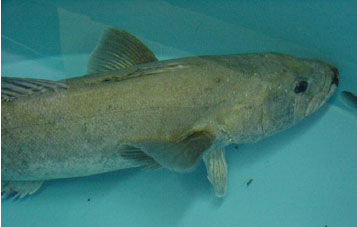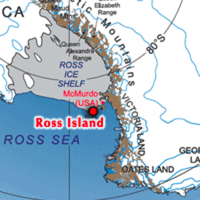Where Have All the Whales Gone?
CAPE ROYDS, ROSS ISLAND, ANTARCTICA– Since the early 20th century when exploration of the Ross Sea became common, killer whales have been sighted regularly and described as the most abundant whale in the area. Recently, the killer whales of this area have been divided into three ecotypes based on their feeding behaviors and identified by their eye patch markings. Of the three defined types, A, B, and C, only two, the B and C, are common to the Ross Sea and McMurdo Sound area. Type Cs, now known as “Ross Sea killer whales” (owing to presence mostly in Ross Sea and a bit to the west), feed primarily on fish, mainly Antarctic toothfish and silverfish, while type Bs feed on seals and perhaps Emperor penguins.
Ross Sea killer whales appear in the McMurdo Sound area and the southern Ross Sea, in early December and ply various fast ice edges (ice attached to the land), which as the season progresses recede further and further south toward the continent. They also apparently forage under or along the edge of the Ross Ice Shelf by Cape Crozier on the other side of Ross Island. These whales feed on fish that live under the fast ice and as the ice recedes the whales are able to exploit more and more feeding territory. Sightings of these whales, from land, helicopters and ships have been carried out through the years, most recently from the Cape Crozier and Cape Royds penguin colonies on Ross Island, where it has been noticed that the presence of whales (including minke whales) follows a shift in the diet of the penguins.
In 2005 the ratio of C to B killer whales was 50-1, but over the next few years it steadily dropped to 16-1 by 2008. As the observed numbers of B whales (seal eaters) did not change during this time, the altered ratio was due to the decrease in Ross Sea killer whales. During the years of these observations another important series of events was taking place.
Although commercial fishing of the Antarctic toothfish (sold as “Chilean sea bass”) in the Ross Sea began in 1996, it was expanded in 2004 from 9 to 22 fishing vessels; not surprisingly that same year the catch reached its allowed limit of 3500 tones. These boats target the largest adult toothfish, which is the same size those taken by the whales. Toothfish are a slow growing species which do not reach maturity until 16 years old. Many of these fish taken in the fishery were over 25 years old, some older.
Since 2004, the commercial catch has remained steady year by year. Catch and release efforts of toothfish by scientists in McMurdo Sound remained steady from the years 1974 to 2000, but dropped 50% in 2001 a few years after the commercial fishing began and then to 4% in 2007, only 3 years after the peak commercial catches began. It would appear that the drop in Ross Sea killer whale numbers is related to the increase in the commercial fishing of the toothfish.
Are there any other animals that would be affected by the reduction in toothfish numbers?
Weddell seals also take toothfish as a primary food source and their numbers have not decreased in McMurdo Sound, though trends elsewhere along Victoria Land are unknown. Seals are able to dive deeper and stay under longer than the whales and therefore able to catch the fish which are safe from the whales. Seals therefore not only forage where the whales forage, but also in areas the whales can not reach, places covered with extensive fast ice where small cracks provide breathing holes. Seals also eat silverfish. It is thought that whales also eat silverfish but there are no confirmed sightings for this. The whales therefore may be more sensitive to changes in toothfish availability. If the toothfish industry continues to extract the current yearly numbers, it is predicted these creatures will decline more rapidly.
For more information about the Ross Sea, the toothfish industry and how it is affecting penguins, whales and seals go to The Last Ocean.














Wow.Thanks for all of this information and the pictures too.
all of the animals are leaving…